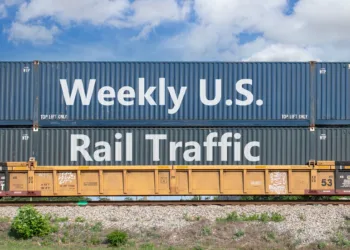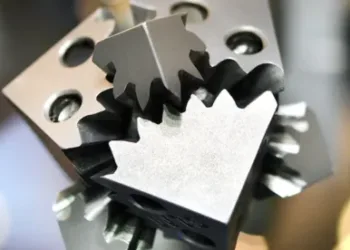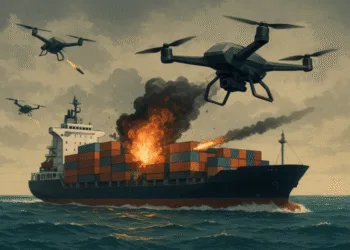By Vijay Cherukuru, director of product at Walmart GoLocal
Around the globe, 7,000-plus companies have announced plans to achieve net-zero carbon emissions or carbon neutrality. Medium- and heavy-duty transportation vehicles account for 1% of total vehicles on the road but contribute to about 20% of emissions and particulate matter.
There’s a global push to decarbonize transportation fleets. An emissions-free transportation future will require a combination of technologies including electric, hydrogen fuel cell and internal-combustion engines powered by renewable fuels. As an ecosystem, we are still in early stages of manufacturing, operationalizing and maintaining alternative fuel transportation vehicles. Federal and state regulations, improvements to battery and fuel cell technologies, availability of incentives and funding, driver acceptance, and ability of vehicle manufacturers to achieve large-scale production-ready performance will play a key role in adoption of emissions-free technology by fleets.
Supply chain leaders looking to transition to a net-zero-carbon supply chain will benefit from engaging the regulatory agencies, battery and fuel cell manufacturers, energy providers, and their supply chain workforce to gain understanding of bottom-line financial impact, current state of technology, total cost of ownership and key adoption criteria.
Dynamic regulatory landscape
In August 2022, the California Air Resources Board (CARB) approved the Advanced Clean Trucks (ACT) regulation, which requires 40%-75% of medium- and heavy-duty vehicles sold in the state to be zero-emission vehicles (ZEVs) by 2035, depending on the vehicle class. This regulation is part of California’s broader efforts to reduce emissions from the transportation sector.
As of May, 10 other states had adopted the ACT regulation, and together, they make up 27% of the U.S. medium- and heavy-duty vehicle market. The state of California has also passed an Advanced Clean Fleets (ACF) regulation that requires fleets to gradually phase out internal-combustion gas-powered vehicles and mandate that a certain portion of their new vehicle purchases be ZEVs. The Office of Clean Energy Demonstrations also has about $27 billion in available funding toward development, storage and distribution of clean energy, including hydrogen, nuclear power and carbon management.
Key innovations
Tesla kicked off the EV revolution in trucking in 2017 when it announced a battery-powered Semi truck with a range of 500 miles. The forward-thinking regulatory mandates, along with technology advancements by Tesla and traditional trucking manufacturers, led to a decent assortment of commercially available emissions-free last-mile delivery vans, box trucks and semitrucks as of 2024.
Traditional trucking manufacturers such as Daimler and Volvo now offer electric Class 8 trucks with advertised ranges between 150 and 500 miles. In the U.S., Nikola, a trucking startup, offers a hydrogen fuel cell semi-truck and has sold 112 vehicles in the first half of 2024.
Revoy, another EV startup, allows semitrucks to tap into battery power through an aftermarket EV power unit that helps burn less diesel and comply with state-level regulations, allowing carriers to maximize their existing fleets while reducing emissions.
We are also witnessing a new wave of companies such as TeraWatt and WattEV tapping into federal and state funding to build EV charging and hydrogen refueling infrastructure to enable commercial fleets to recharge their ZEVs across California and other strategic locations throughout the U.S.
Total cost to transport: A key adoption criteria
For small and large fleets alike, total cost to transport (TCT) is a critical criteria that decides the speed of electric and autonomous vehicle adoption. Several large fleets and 3PLs such as Ryder Electric are publishing early data from their pilot EV fleet implementations.
In one study published by Ryder, the TCT, which includes vehicle purchasing costs, fuel, driver and other personnel costs, and maintenance expenses, increased by 67% for an EV fleet compared to a diesel fleet.
As 3PLs and transportation carriers face market headwinds including abundant capacity, cooling demand, increased fuel prices and inflationary pressures, transitioning their fleets to EVs is not a top priority for a majority of them in 2024. Manufacturers, regulators and shippers are waiting for reduced prices and increased charging and refueling infrastructure prior to making significant investments.
Advice for supply chain execs looking to transition to a net-zero carbon fleet
Forward-thinking executives have several ways to test the waters and learn from low-risk experiments to develop early expertise in electric/autonomous fleet transition. A good EV and autonomous vehicle pilot could include four workstreams:
- Understanding vehicle technology and the financing landscape: Engage manufactures to understand the maturity of their EV/AV vehicles, operational concerns, range, battery packs, charging infrastructure, order-to-delivery timelines, and financial incentives available from federal, state and local governments. Evaluate the best-fit alternative vehicle type (electric versus hydrogen versus others) for your specific operation.
- Understanding the charging/refueling landscape: Once you decide among electric, hydrogen or a mix of both, it’s important to understand the existing first-party and third-party charging and refueling infrastructure needs. For early stage pilots, partner with existing refueling-as-a-service companies to reduce upfront capital costs and assess total refueling/charging costs.
- Understanding the energy landscape: Building a truck charging station or a hydrogen refueling station in-house would require significant coordination with utilities and associated infrastructure manufacturers and can take 12-24 months depending on the size of the station, location, grid and existing regional storage solutions. Partnering with existing energy providers will enable quicker operationalization of the pilots.
- Understanding the impact to your supply chain operations: EVs and AVs will require significant changes to your yard management, warehousing, and transportation planning and execution software. Engage your technology suppliers and operational leaders early on in your evaluation life cycle to avoid expensive delays.
Given the global push to reduce transportation emissions, regulators, manufacturers, researchers and startups are pursuing critical unlocks such as a 1,000-mile battery pack, autonomous trucks delivering door to door, transition to a 100% clean energy grid, on-site energy generation via modular nuclear reactors and aftermarket battery packs to enable diesel vehicles to run on battery packs, among others. Supply chain leaders have an opportunity to actively participate and influence the regulatory framework, product development and operationalization of electric and autonomous vehicles.
The post How to cut transportation emissions, evaluate new zero-emission vehicles appeared first on FreightWaves.





















